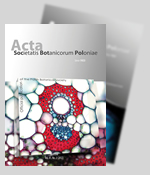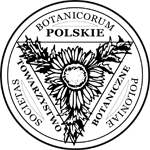The Old and New RNA World
Abstract
Keywords
Full Text:
PDFReferences
Orgel LE. Evolution of the genetic apparatus. J Mol Biol. 1968;38(3):381–393.
Crick FH. The origin of the genetic code. J Mol Biol. 1968;38(3):367–379.
Woese CR. The genetic code: the molecular basis for genetic expression. New York, NY: Harper & Row; 1967.
Eigen M, Schuster P. A principle of natural self-organization. Naturwissenschaften. 1977;64(11):541–565. http://dx.doi.org/10.1007/BF00450633
Kruger K, Grabowski PJ, Zaug AJ, Sands J, Gottschling DE, Cech TR. Self-splicing RNA: autoexcision and autocyclization of the ribosomal RNA intervening sequence of Tetrahymena. Cell. 1982;31(1):147–157.
Guerrier-Takada C, Gardiner K, Marsh T, Pace N, Altman S. The RNA moiety of ribonuclease P is the catalytic subunit of the enzyme. Cell. 1983;35(3 pt 2):849–857.
Leslie E. O. Prebiotic chemistry and the origin of the RNA world. Crit Rev Biochem Mol Biol. 2004;39(2):99–123. http://dx.doi.org/10.1080/10409230490460765
Powner MW, Gerland B, Sutherland JD. Synthesis of activated pyrimidine ribonucleotides in prebiotically plausible conditions. Nature. 2009;459(7244):239–242. http://dx.doi.org/10.1038/nature08013
Bowler FR, Chan CKW, Duffy CD, Gerland B, Islam S, Powner MW, et al. Prebiotically plausible oligoribonucleotide ligation facilitated by chemoselective acetylation. Nat Chem. 2013;5(5):383–389. http://dx.doi.org/10.1038/nchem.1626
Adamala K, Szostak JW. Nonenzymatic template-directed RNA synthesis inside model protocells. Science. 2013;342(6162):1098–1100. http://dx.doi.org/10.1126/science.1241888
Talini G, Gallori E, Maurel MC. Natural and unnatural ribozymes: back to the primordial RNA world. Res Microbiol. 2009;160(7):457–465. http://dx.doi.org/10.1016/j.resmic.2009.05.005
Gold L, Janjic N, Jarvis T, Schneider D, Walker JJ, Wilcox SK, et al. Aptamers and the RNA world, past and present. Cold Spring Harb Perspect Biol. 2012;4(3):a003582. http://dx.doi.org/10.1101/cshperspect.a003582
Bartel DP, Szostak JW. Isolation of new ribozymes from a large pool of random sequences. Science. 1993;261(5127):1411–1418. http://dx.doi.org/10.1126/science.7690155
Johnston WK, Unrau PJ, Lawrence MS, Glasner ME, Bartel DP. RNA-catalyzed RNA polymerization: accurate and general RNA-templated primer extension. Science. 2001;292(5520):1319–1325. http://dx.doi.org/10.1126/science.1060786
Lee N, Bessho Y, Wei K, Szostak JW, Suga H. Ribozyme-catalyzed tRNA aminoacylation. Nat Struct Mol Biol. 2000;7(1):28–33. http://dx.doi.org/10.1038/71225
Tsukiji S, Pattnaik SB, Suga H. An alcohol dehydrogenase ribozyme. Nat Struct Mol Biol. 2003;10(9):713–717. http://dx.doi.org/10.1038/nsb964
Serganov A, Keiper S, Malinina L, Tereshko V, Skripkin E, Höbartner C, et al. Structural basis for Diels–Alder ribozyme-catalyzed carbon-carbon bond formation. Nat Struct Mol Biol. 2005;12(3):218–224. http://dx.doi.org/10.1038/nsmb906
Jadhav VR, Yarus M. Acyl-CoAs from coenzyme ribozymes. Biochemistry (Mosc). 2002;41(3):723–729. http://dx.doi.org/10.1021/bi011803h
Parker ET, Cleaves HJ, Dworkin JP, Glavin DP, Callahan M, Aubrey A, et al. Primordial synthesis of amines and amino acids in a 1958 Miller H2S-rich spark discharge experiment. Proc Natl Acad Sci USA. 2011;108(14):5526–5531. http://dx.doi.org/10.1073/pnas.1019191108
Joyce GF. The antiquity of RNA-based evolution. Nature. 2002;418(6894):214–221. http://dx.doi.org/10.1038/418214a
Illangasekare M, Yarus M. A tiny RNA that catalyzes both aninoacyl-tRNA and peptidyl-RNA synthesis. RNA. 1999;5:1482–1489.
Steitz TA, Moore PB. RNA, the first macromolecular catalyst: the ribosome is a ribozyme. Trends Biochem Sci. 2003;28(8):411–418. http://dx.doi.org/10.1016/S0968-0004(03)00169-5
Lear JD, Wasserman ZR, DeGrado WF. Synthetic amphiphilic peptide models for protein ion channels. Science. 1988;240(4856):1177–1181. http://dx.doi.org/10.1126/science.2453923
Hamilton AJ, Baulcombe DC. A species of small antisense RNA in posttranscriptional gene silencing in plants. Science. 1999;286(5441):950–952. http://dx.doi.org/10.1126/science.286.5441.950
Fire A, Xu S, Montgomery MK, Kostas SA, Driver SE, Mello CC. Potent and specific genetic interference by double-stranded RNA in Caenorhabditis elegans. Nature. 1998;391(6669):806–811. http://dx.doi.org/10.1038/35888
Xie Z, Allen E, Fahlgren N, Calamar A, Givan SA, Carrington JC. Expression of Arabidopsis MIRNA genes. Plant Physiol. 2005;138(4):2145–2154. http://dx.doi.org/10.1104/pp.105.062943
Szweykowska-Kulińska Z, Jarmolowski A, Vazquez F. The crosstalk between plant microRNA biogenesis factors and the spliceosome. Plant Signal Behav. 2013;8(11):e26955. http://dx.doi.org/10.4161/psb.26955
Brodersen P, Sakvarelidze-Achard L, Bruun-Rasmussen M, Dunoyer P, Yamamoto YY, Sieburth L, et al. Widespread translational inhibition by plant miRNAs and siRNAs. Science. 2008;320(5880):1185–1190. http://dx.doi.org/10.1126/science.1159151
Vazquez F, Vaucheret H, Rajagopalan R, Lepers C, Gasciolli V, Mallory AC, et al. Endogenous trans-acting siRNAs regulate the accumulation of Arabidopsis mRNAs. Mol Cell. 2004;16(1):69–79. http://dx.doi.org/10.1016/j.molcel.2004.09.028
Allen E, Xie Z, Gustafson AM, Carrington JC. microRNA-directed phasing during trans-acting siRNA biogenesis in plants. Cell. 2005;121(2):207–221. http://dx.doi.org/10.1016/j.cell.2005.04.004
Fahlgren N, Montgomery TA, Howell MD, Allen E, Dvorak SK, Alexander AL, et al. Regulation of AUXIN RESPONSE FACTOR3 by TAS3 ta-siRNA affects developmental timing and patterning in Arabidopsis. Curr Biol. 2006;16(9):939–944. http://dx.doi.org/10.1016/j.cub.2006.03.065
Zhou C, Han L, Fu C, Wen J, Cheng X, Nakashima J, et al. The trans-acting short interfering RNA3 pathway and NO APICAL MERISTEM antagonistically regulate leaf margin development and lateral organ separation, as revealed by analysis of an argonaute7/lobed leaflet1 mutant in Medicago truncatula. Plant Cell. 2013;4845–4862. http://dx.doi.org/10.1105/tpc.113.117788
Rajagopalan R, Vaucheret H, Trejo J, Bartel DP. A diverse and evolutionarily fluid set of microRNAs in Arabidopsis thaliana. Genes Dev. 2006;20(24):3407–3425. http://dx.doi.org/10.1101/gad.1476406
Chen HM, Li YH, Wu SH. Bioinformatic prediction and experimental validation of a microRNA-directed tandem trans-acting siRNA cascade in Arabidopsis. Proc Natl Acad Sci USA. 2007;104(9):3318–3323. http://dx.doi.org/10.1073/pnas.0611119104
Vazquez F, Hohn T. Biogenesis and biological activity of secondary siRNAs in plants. Scientifica. 2013;2013:1–12. http://dx.doi.org/10.1155/2013/783253
Borsani O, Zhu J, Verslues PE, Sunkar R, Zhu JK. Endogenous siRNAs derived from a pair of natural cis-antisense transcripts regulate salt tolerance in Arabidopsis. Cell. 2005;123(7):1279–1291. http://dx.doi.org/10.1016/j.cell.2005.11.035
Katiyar-Agarwal S, Gao S, Vivian-Smith A, Jin H. A novel class of bacteria-induced small RNAs in Arabidopsis. Genes Dev. 2007;21(23):3123–3134. http://dx.doi.org/10.1101/gad.1595107
Katiyar-Agarwal S, Morgan R, Dahlbeck D, Borsani O, Villegas A, Zhu JK, et al. A pathogen-inducible endogenous siRNA in plant immunity. Proc Natl Acad Sci USA. 2006;103(47):18002–18007. http://dx.doi.org/10.1073/pnas.0608258103
Zhou X, Sunkar R, Jin H, Zhu JK, Zhang W. Genome-wide identification and analysis of small RNAs originated from natural antisense transcripts in Oryza sativa. Genome Res. 2009;19(1):70–78. http://dx.doi.org/10.1101/gr.084806.108
Pikaard CS, Haag JR, Ream T, Wierzbicki AT. Roles of RNA polymerase IV in gene silencing. Trends Plant Sci. 2008;13(7):390–397. http://dx.doi.org/10.1016/j.tplants.2008.04.008
Matzke M, Kanno T, Daxinger L, Huettel B, Matzke AJ. RNA-mediated chromatin-based silencing in plants. Curr Opin Cell Biol. 2009;21(3):367–376. http://dx.doi.org/10.1016/j.ceb.2009.01.025
Zheng B, Wang Z, Li S, Yu B, Liu JY, Chen X. Intergenic transcription by RNA polymerase II coordinates Pol IV and Pol V in siRNA-directed transcriptional gene silencing in Arabidopsis. Genes Dev. 2009;23(24):2850–2860. http://dx.doi.org/10.1101/gad.1868009
Smith LM, Pontes O, Searle I, Yelina N, Yousafzai FK, Herr AJ, et al. An SNF2 protein associated with nuclear RNA silencing and the spread of a silencing signal between cells in Arabidopsis. Plant Cell. 2007;19(5):1507–1521. http://dx.doi.org/10.1105/tpc.107.051540
Wierzbicki AT, Ream TS, Haag JR, Pikaard CS. RNA polymerase V transcription guides ARGONAUTE4 to chromatin. Nat Genet. 2009;41(5):630–634. http://dx.doi.org/10.1038/ng.365
Wierzbicki AT, Haag JR, Pikaard CS. Noncoding transcription by RNA polymerase Pol IVb/Pol V mediates transcriptional silencing of overlapping and adjacent genes. Cell. 2008;135(4):635–648. http://dx.doi.org/10.1016/j.cell.2008.09.035
Molnar A, Melnyk CW, Bassett A, Hardcastle TJ, Dunn R, Baulcombe DC. Small silencing RNAs in plants are mobile and direct epigenetic modification in recipient cells. Science. 2010;328(5980):872–875. http://dx.doi.org/10.1126/science.1187959
Vazquez F, Legrand S, Windels D. The biosynthetic pathways and biological scopes of plant small RNAs. Trends Plant Sci. 2010;15(6):337–345. http://dx.doi.org/10.1016/j.tplants.2010.04.001
Bouche N, Lauressergues D, Gasciolli V, Vaucheret H. An antagonistic function for Arabidopsis DCL2 in development and a new function for DCL4 in generating viral siRNAs. EMBO J. 2006;25(14):3347–3356. http://dx.doi.org/10.1038/sj.emboj.7601217
Voinnet O. Non-cell autonomous RNA silencing. FEBS Lett. 2005;579(26):5858–5871. http://dx.doi.org/10.1016/j.febslet.2005.09.039
Ding S-W, Voinnet O. Antiviral immunity directed by small RNAs. Cell. 2007;130(3):413–426. http://dx.doi.org/10.1016/j.cell.2007.07.039
Liu J, Jung C, Xu J, Wang H, Deng S, Bernad L, et al. Genome-wide analysis uncovers regulation of long intergenic noncoding RNAs in Arabidopsis. Plant Cell. 2012;24(11):4333–4345. http://dx.doi.org/10.1105/tpc.112.102855
Ariel F, Jegu T, Latrasse D, Romero-Barrios N, Christ A, Benhamed M, et al. Noncoding transcription by alternative RNA polymerases dynamically regulates an auxin-driven chromatin loop. Mol Cell. 2014;55(3):383–396. http://dx.doi.org/10.1016/j.molcel.2014.06.011
Mironov AS, Gusarov I, Rafikov R, Lopez LE, Shatalin K, Kreneva RA, et al. Sensing small molecules by nascent RNA: a mechanism to control transcription in bacteria. Cell. 2002;111(5):747–756. http://dx.doi.org/10.1016/S0092-8674(02)01134-0
Winkler W, Nahvi A, Breaker RR. Thiamine derivatives bind messenger RNAs directly to regulate bacterial gene expression. Nature. 2002;419(6910):952–956. http://dx.doi.org/10.1038/nature01145
Reining A, Nozinovic S, Schlepckow K, Buhr F, Fürtig B, Schwalbe H. Three-state mechanism couples ligand and temperature sensing in riboswitches. Nature. 2013;499(7458):355–359. http://dx.doi.org/10.1038/nature12378
Roth A, Breaker RR. The structural and functional diversity of metabolite-binding riboswitches. Annu Rev Biochem. 2009;78(1):305–334. http://dx.doi.org/10.1146/annurev.biochem.78.070507.135656
Cheah MT, Wachter A, Sudarsan N, Breaker RR. Control of alternative RNA splicing and gene expression by eukaryotic riboswitches. Nature. 2007;447(7143):497–500. http://dx.doi.org/10.1038/nature05769
Wachter A. Riboswitch-mediated control of gene expression in eukaryotes. RNA Biol. 2010;7(1):67–76. http://dx.doi.org/10.4161/rna.7.1.10489
Simpson CG, Manthri S, Raczynska KD, Kalyna M, Lewandowska D, Kusenda B, et al. Regulation of plant gene expression by alternative splicing. Biochem Soc Trans. 2010;38(2):667. http://dx.doi.org/10.1042/BST0380667
Reddy ASN, Marquez Y, Kalyna M, Barta A. Complexity of the alternative splicing landscape in plants. Plant Cell. 2013;25(10):3657–3683. http://dx.doi.org/10.1105/tpc.113.117523
Pan Q, Shai O, Lee LJ, Frey BJ, Blencowe BJ. Deep surveying of alternative splicing complexity in the human transcriptome by high-throughput sequencing. Nat Genet. 2008;40(12):1413–1415. http://dx.doi.org/10.1038/ng.259
Remy E, Cabrito TR, Baster P, Batista RA, Teixeira MC, Friml J, et al. A major facilitator superfamily transporter plays a dual role in polar auxin transport and drought stress tolerance in Arabidopsis. Plant Cell. 2013;25(3):901–926. http://dx.doi.org/10.1105/tpc.113.110353
Remy E, Cabrito TR, Batista RA, Hussein MAM, Teixeira MC, Athanasiadis A, et al. Intron retention in the 5’UTR of the novel ZIF2 transporter enhances translation to promote zinc tolerance in Arabidopsis. PLoS Genet. 2014;10(5):e1004375. http://dx.doi.org/10.1371/journal.pgen.1004375
DOI: https://doi.org/10.5586/asbp.2014.035
|
|
|







